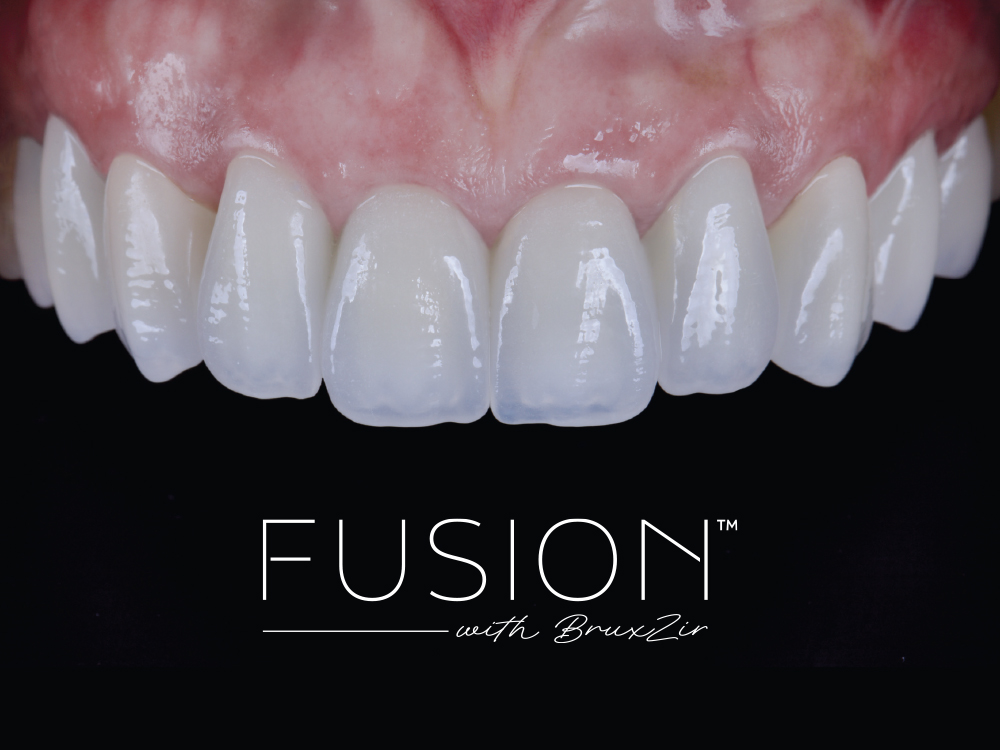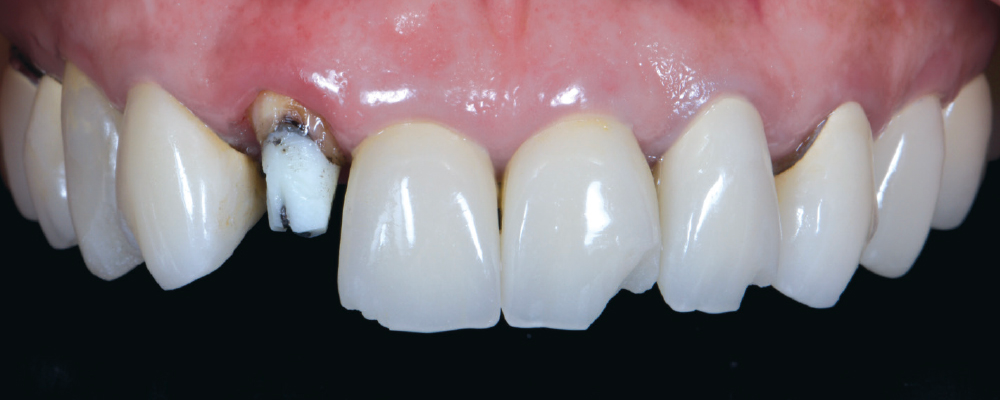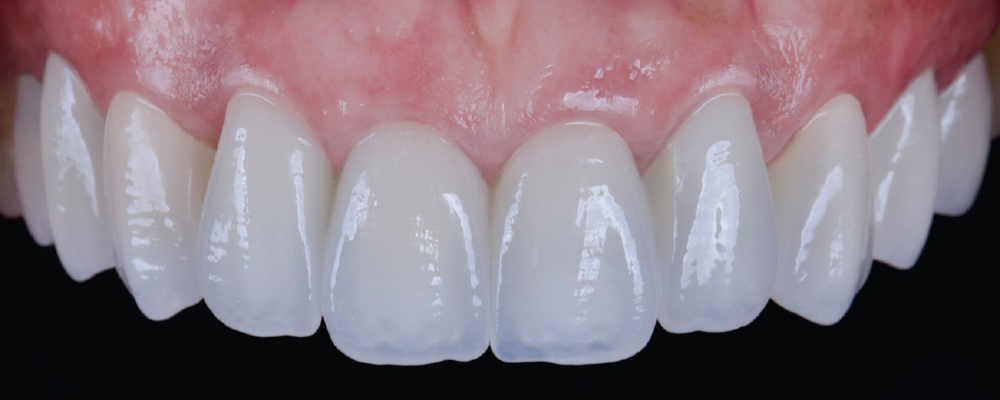- Jinny Bender
- DMD

800-854-7256 USA


BruxZir® Zirconia forever changed the course of restorative dentistry. Along with monolithic glass ceramics, BruxZir Zirconia sparked a sweeping change for the general practitioner — with dentists setting aside full-cast crowns and PFMs and in their place embracing tooth-colored solid materials.
The role of BruxZir Zirconia in dentistry today exceeds my wildest expectations. While many in my position might be satisfied with BruxZir as their legacy, as a dental ceramist at heart, I feel that there’s opportunity for esthetic improvement.
After all, BruxZir Zirconia was intended to fill a very specific purpose: To be a “people’s crown” — an affordable, tooth-colored material that performs like cast gold. Over the years we’ve innovated so that BruxZir also offers beauty with that performance. But still, there’s a fundamental limit for monolithic zirconia esthetics. Monolithics are too uniform, too monochromatic, too perfect. They result in a bright, flawless “Hollywood” look that — while being exactly what many patients ask for — is not quite true-to-life.
Real smiles are beautifully imperfect. What we’d call “Natural Beauty” is driven largely by how light interacts with the differing layers, textures and morphology found within real tooth structure. To us in the dental industry, real smiles are unmistakable.
While admittedly there are master ceramists who can very closely approximate a natural tooth with monolithic ceramics, that level of artistry is too costly for most patients and dentists. So, for those who want realism without the boutique lab price point, I’m proud to introduce Fusion with BruxZir™ Zirconia.
Fusion with BruxZir Zirconia is designed to mimic nature perfectly. We’ve taken the hallmarks of real tooth esthetics — the dentin-enamel layering, the color gradation and translucency — and replicated those with a modern bilayered restoration.
What sets Fusion with BruxZir restorations apart from traditional bilayered crowns is that both layers are milled independently; where in traditional bilayered restorations, one ceramic is pressed on or built-up over the substructure. Milling both parts independently allows for more precise and more repeatable control of the final morphology and structure. Milling also allows for both layers to be made from zirconia, a material that has an indisputable performance track record and one we at Glidewell were largely responsible for bringing to the dental market. In Fusion with BruxZir restorations, the inner core is made from BruxZir Full-Strength Zirconia and the wraparound veneer is made from BruxZir Radiant Zirconia (Fig. 1).
This zirconia-to-zirconia form factor overcomes the esthetic limitations of monolithic zirconia. Where monolithics are solid-looking and uniform in color, Fusion’s layers mimic the coalesced look of natural teeth. The inner core is anatomically shaped with lobes and mamelons. The outer wraparound veneer is translucent and characterized with surface texture, like perikymata. When the layers are joined together, you’ll see internal anatomy subtly hinting through the facial and light shining through the incisal and interproximal — just like the real thing.
The idea behind Fusion with BruxZir restorations is simple: Make a crown that mimics nature. What’s difficult is achieving those results at a scale that allows all dentists to benefit.
Critical to this effort were the lessons learned by manufacturing more than 35 million BruxZir Zirconia units — milling strategies, digital design, materials science, automation and the application of artificial intelligence. But in place of making another monolithic zirconia, we applied this knowledge instead to a more traditional two-piece form-factor. This composition creates the dimensional depth and layered anatomy that are hallmarks of a natural-looking smile (Fig. 2).
But structure alone does not make a natural-looking smile. Coloration and translucency also play an important role. Again, the bilayered form-factor comes into play because it offers two canvases, an internal layer and external layer, both of which can be independently designed for maximum realism prior to being milled and hand characterized.
Though we have shifted many of our most experienced dental technicians to the Fusion with BruxZir production unit, the bulk of the process is digitized — from scanning, to design, to milling — with those knowledgeable technicians informing and supervising much of the computer-controlled processes. Their intimate knowledge of classical ceramics, smile anatomy and restorative beauty has allowed us to impart artistry into the technology in a novel way, with many advancements made to our proprietary design and milling software.
This marriage of engineering and artistry creates a level of repeatability that allows us to better control the costs, and in turn offer these restorations at an accessible price to the practitioner. Fusion with BruxZir restorations are available for just $199 per unit.
With the proliferation of social media, many patients today feel pressured to chase the unnatural look of influencers and celebrities — with their overly big, perfect white smiles. But more patients simply want to be a better version of themselves. This pursuit of enhanced authenticity was the driving force behind Fusion with BruxZir Zirconia: To replicate nature — to offer a way to restore realism to a smile for the everyday patient. As a ceramist, I’m extremely proud of the results we’re creating with Fusion with BruxZir restorations (Fig. 3). I’d encourage you to explore firsthand what it can do for your patients.

Fusion with BruxZir Zirconia gives us a PFM-like solution that’s made entirely from zirconia. Its ability to mask dark preps while still offering lifelike translucency makes it distinct from the go-to monolithic solutions, adding an excellent pathway to achieve lifelike esthetics.






